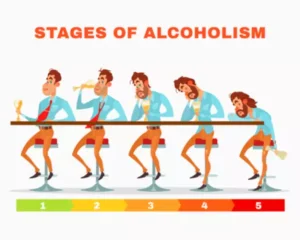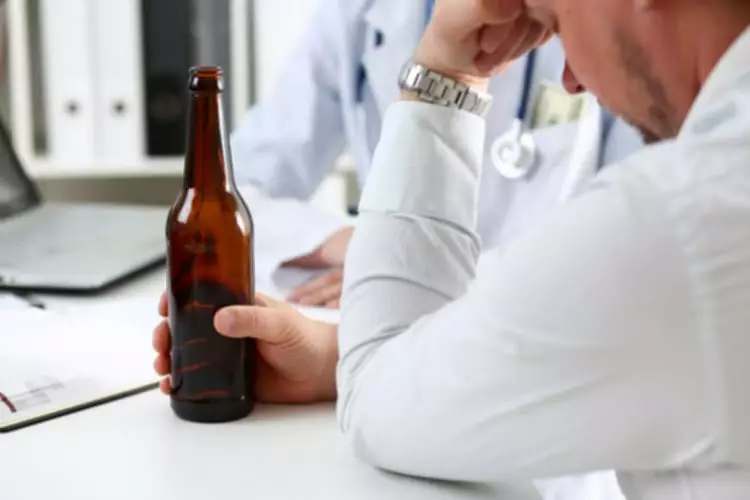
As adults age, there are changes in body composition that lead to decreased lean muscle mass and decreased total volume of body water available for alcohol to distribute 17, 18. As a result, a given amount of alcohol results in a higher blood alcohol level in older adults and ultimately puts older adults at risk for intoxication and harm at a lower intake of alcohol 16. Complementary therapies and activities, like animal-assisted therapy, may help your older clients improve certain aspects of their physical, social, and emotional health. But be sure to discuss with them both the benefits and potential limitations of these strategies.

Person-centered care is the preferred approach for this population and emphasizes older clients' values, needs, and preferences from among a menu what is the best treatment for substance abuse for older adults of care options. Choose where we'll send you resources to support your health and financial well-being. Select an option(s) below that best describes you to get communication that matches your interests. Experts recommend that older people have no more than seven alcoholic drinks per week.
With these two professions shut out of the largest insurer in the country, Medicare beneficiaries do not have sufficient access to mental health treatment. Individuals ages 65 and older have lower odds of perceived treatment need than younger individuals, and often report a lack of readiness to stop using substances as one of their primary reasons to not seek treatment (Choi et al., 2014). As a result, older adults are more likely to be referred to SUD treatment from other sources such as community social service providers than from healthcare providers (Sahker et al., 2015).


Some experience a decrease in serotonin and dopamine, neurotransmitters responsible for regulating moods and emotions. Reducing these neurotransmitters has been linked with higher rates of depression, anxiety, and other mental health issues, increasing one’s risk for substance abuse or addiction. In recent years, the number of senior citizens seeking addiction treatment in the United States has skyrocketed.
The use of standardized screening tools and specific diagnostic criteria will improve the identification of older individuals with SUDs. If detox is needed as part of the treatment for seniors, inpatient care is recommended due to their significantly increased risk for https://ecosoberhouse.com/ complications during the detoxification process. When a comorbid illness is also present, integrated treatment models that use teams of medical and mental health professionals to treat both disorders simultaneously is important. Compared to their younger counterparts, older adults are more vulnerable to the impacts of alcohol. The etiology is multifactorial, likely related to changes in neurocircuitry, neurovasculature, hepatic function, and adiposity that occur as a function of normal aging 5. For example, increased permeability of the blood brain barrier, decreased liver metabolism, and increased body fat predispose older adults to alcohol toxicity 16, 17.

This program is suited for those with a dependence on a substance who require medical supervision when stopping use. Additionally, many inpatient facilities offer nutritional counseling, health and wellness activities (e.g., yoga/meditation, recreation space, outdoor activities, etc.), and a host of additional services and amenities. Additionally, risky behavior typically peaks in young adulthood, as youth struggle to secure employment, become financially secure, and reach a state of well-being. While these challenges often cause stress, confusion, and fear, young adults are still expected to take on new responsibilities.2 Unfortunately, these added stressors and widespread change can impact the development of substance use disorders. Residential services are designed for people who are in need of support in their recovery, and may not be able to participate in treatment without a 24-hour residential setting. Residential services are designed to develop or maintain recovery through a structured, substance-free setting, and can include group support, skills development related to independent living, and other services designed to promote recovery.

Ask clients to describe how close they are to each member of their network, how long they have known them, and how frequently they see them. Exploring with clients the role adjustments they may face related to retirement; death of a spouse, other family members, friends, or a sponsor; a move to another geographic area; or taking on a parenting role for grandchildren. Linking clients in institutional settings (e.g., hospitals, assisted living) to mutual-help groups that provide meetings in such settings, if available.

Setting up a system to reach out if they sense you may be heading toward a relapse might also be helpful. This way, you can ensure that someone will be there to remind you of the benefits of sobriety and provide support. You must accept help from supportive family and friends when you need it. This technique involves running “a mental videotape” of the entire relapse process.


A relapse is the worsening of a medical condition that had previously improved. When it comes to addiction, it refers to a person engaging in addictive behavior after a period of abstinence. Get you or your loved one help for addiction or mental health issues today. Cultivating positive habits can fortify resilience and provide healthy outlets for stress and emotions. Deep breathing releases neurotransmitters in your brain, many of which trigger feel-good chemicals resulting in relaxation, happiness, and pain reduction. Deep breathing, and the resulting increased oxygen flow, also encourages your body to exhale toxins.

Creating a support network with strong relationships is a foundational aspect of long-lasting recovery. Social support in recovery can reduce stress, increase self-efficacy, and motivate sobriety or remission7. Your relapse prevention plan can detail how you will connect with loved ones who supported you through the treatment process. Try your best to plan regular get-togethers with friends and family, as avoiding isolation and bolstering these relationships can make recovery easier.
Write down things that have helped you stay sober on your recovery journey. Positive coping skills include attending support groups, exercising, journaling, and eating healthy foods to minimize intense cravings. Relapse prevention focuses on building the awareness necessary to https://ecosoberhouse.com/ recognize the early stages of relapse. It also provides the skills to change your behavior and avoid misusing substances again. Relapse prevention is an umbrella term that refers to strategies that help reduce the likelihood of relapsing. Most relapse prevention strategies focus on building cognitive-behavioral skills and coping responses.

There may be times when you experience uncomfortable feelings and situations; however, with the right tools, you can navigate through these moments. You may practice coping techniques such as breathing exercises, regulating emotions through journaling, saying “no” to situations that do not serve your recovery, and exercise. What many do not know, however, is how much control you have over your life by simply changing your breathing patterns. Breathing is not only connected to various essential functions throughout your body, but it also has a large effect on your brain chemistry. Breathing greatly impacts your emotions and helps regulate your overall mood.

Stress can be a significant trigger for relapse, which is why managing it is a critical part of addiction recovery. Common stressors can include work or school demands, relationship issues, financial problems, or health concerns. what is relapse, and give 3 skills for preventing it from happening. Relapse refers to the recurrence of substance use after a period of abstinence. It’s important to note that relapse is not a sign of failure but rather a common and often predictable part of the recovery process. The FHE Health team is committed to providing accurate information that adheres to the highest standards of writing.

Certified addiction specialists can guide your recovery and relapse prevention journey. Surround yourself with a strong support system of friends, family, and sober acquaintances. Additionally, join local recovery meetings to interact with peers in similar situations. Practicing mindfulness also aids in dealing with triggers without using substances. It helps you break free from unhelpful thought https://ecosoberhouse.com/ patterns and focus on healthier alternatives for managing stress. Whether you or a loved one are experiencing challenges controlling their addictive behaviors, the road toward rebuilding self-control can be overwhelming.

Before discussing prevention, it is useful to understand the nature of relapse. Remaining committed to your recovery journey is key to preventing relapses and upholding long-term sobriety. This commitment involves continuously learning new skills, building resilience, and adapting to the challenges that may arise during your recovery journey. High-risk situations can considerably increase the probability of relapse, hence it’s crucial to recognize and handle them effectively. By constructing a plan for evading high-risk circumstances, you can decrease the likelihood of physical relapse and remain focused on your recovery objectives. It’s important to remember that building effective coping mechanisms is a gradual process that requires ongoing effort and dedication.
Remembering the negative effects using had on aspects of their life, such as their relationships, work, or studying, may also help. It is also important to find ways to deal with stress that don't involve relying on alcohol, substances, or harmful behaviors. Stress relievers that might help you manage acute and long-term stress include yoga, deep breathing, meditation, and mindfulness practices. Getting appropriate treatment for co-occurring mental health and medical conditions can also help reduce your risk of relapse. This approach helps people in recovery anticipate the factors that might cause them to engage in their addictive behavior again—and to plan ahead for these situations.

Recovery is an ongoing process, so having the right tools can help you manage addiction or mental health conditions. Write down which substance or substances you use and your reasons for wanting to stop. This might include reasons such as wanting to be more in control of your mental health, wanting to rebuild relationships that have been harmed by substance use, or wanting to progress in your career. One of the biggest fears for many individuals in recovery is the possibility of relapse. Fortunately, there are many strategies that can help individuals in recovery prevent relapse. With our limited coping skills, failure to employ an alternative plan, and unwillingness to talk to anyone, we increase the risk of going back to our old behavior.

By recognizing and addressing triggers, you can take control of your recovery journey and minimize the risk of relapse. Knowing these triggers and high-risk situations is critical to avoid relapse. Talk to your support system and healthcare providers about your personal triggers and how to manage them. Relapse Prevention (RP) strategies can vary significantly depending on the substance involved. Different substances present unique challenges and triggers, necessitating tailored approaches to ensure effective relapse prevention. Identifying personal triggers for relapse is the first step in developing an effective RP plan.

Triggers can be anything from people, places, or objects that remind you of substance use. It’s important to know which triggers might cause you to relapse and come up with strategies for managing them. Keep a note of your therapist’s phone number, emergency contacts, and a concrete action plan in case you relapse.
Mental what is relapse, and give 3 skills for preventing it from happening. health professionals with expertise in addiction treatment can help people in every stage of relapse. There are several effective strategies to get back on track toward recovery. Additionally, maintaining social connections and building a support network through these activities can provide additional motivation and accountability for staying sober.

By working together, you can create a plan that is both effective and sustainable in the long run. It’s important to identify your own stressors and develop healthy coping strategies, such as exercise, meditation, or deep breathing exercises. Practicing self-care and maintaining a healthy lifestyle can also help reduce stress levels. Additionally, seeking professional help or attending support groups can provide additional tools and resources for managing stress. Self-care is a critical component of addiction recovery because it promotes physical and mental well-being, reduces stress, and helps individuals stay focused on their goals.
The effort to choose your health and well-being every day is a great feat, so continue to reflect and pride yourself on your hard work. Clarity is an act of kindness, so be honest and straightforward in these conversations with your loved ones. You can frame the conversation around “I” statements to express your feelings and needs without blaming others.

By consistently working on your coping skills and adapting them to your evolving needs, you can enhance your resilience and ability to maintain sobriety in the face of adversity. Exercise is an excellent self-care practice that can help improve mood, reduce stress, and promote overall well-being. Regular physical activity can also help prevent relapse by providing a positive outlet for stress and negative emotions. Implementing physical exercise into your daily routine doesn’t have to be complicated; even simple activities like walking, swimming, or yoga can https://ecosoberhouse.com/ provide significant benefits.

Most alcohol and drug treatment centers educate clients on relapse prevention techniques and help clients learn them in order to maintain recovery and achieve short- and long-term goals. There are a vast array of relapse prevention tools one can implement into their daily routine to help prevent relapse. There is a common misconception that relapse prevention skills should only be used when someone is having a desire to use.
Someone who has grown dependent on a substance may not feel “normal” without it. Therefore, a return to drug or alcohol use may seem like a good way to get back to feeling OK, curbing withdrawal symptoms, and combating strong cravings. There are effective relapse prevention strategies that can help to turn you back on the path to recovery. It’s important to cooperate with doctors and take urine drug tests as recommended.


Utilizing your support network can be an important part of your prevention plan. You might want to write a list of friends or family members you can call when you are experiencing cravings or challenging situations. It is important that these people understand your recovery process and are not going to create triggers or temptations for you. Sometimes, specific people may act as triggers, such as friends that you used to drink or use drugs with. It may be a necessary part of your prevention plan and recovery process to identify and remove these people from your social circle, to avoid facing temptations. The following 10 strategies can help you stay on track and avoid relapse, from recognizing and addressing triggers to staying motivated and persistent.
For each goal you achieve, give yourself a reward as motivation to keep moving forward. For instance, book yourself a relaxing massage or buy yourself something you’ve had your eye on. Seeking help for addiction may feel daunting or even scary, but several organizations can provide support. About half of people recovering from an SUD eventually return to using within 12 weeks of completing intensive inpatient programs that may last 4–12 weeks or more. The American Society of Addiction Medicine (ASAM) defines relapse as the recurrence of behavioral or other substantive indicators of active disease after a period of remission. John C. Umhau, MD, MPH, CPE is board-certified in addiction medicine and preventative medicine.

Since then, he’s worked in multiple settings that provide diagnosis, assessment, and counseling for individuals struggling with what is relapse, and give 3 skills for preventing it from happening. both addiction and co-occurring mental health diagnoses. He is passionate about the work he does, and has worked towards implementing what he’s learned, to his own life for his own continued personal growth. Joseph is always looking for opportunities to learn more and grow his skillset with the central goal of improving the lives of those around him. Remember, if you are trying to quit, you should plan for and try to avoid relapse. But if you do relapse, you should accept that it is a normal part of quitting and resolve to learn from the experience.

This is a critical stage where they are torn between staying sober and going back to substance abuse. By recognizing this stage, it is possible to https://ecosoberhouse.com/ seek help and prevent the next stage from occurring. Mental relapse is the stage of relapse when a person starts having active thoughts of using drugs or alcohol because of the emotions experienced during the emotional relapse. For example, they may start fantasizing about using drugs, making plans to meet old drinking buddies, or wondering where and how they can obtain drugs or alcohol.

CBT is a form of psychotherapy that helps identify negative thoughts that lead to substance abuse. CBT effectively reduces the risk of relapse and is an integral component of the recovery process. Relapse prevention is a critical aspect of addiction recovery, but it comes with psychological, social, or environmental challenges, making it essential to develop effective strategies to overcome them. According to a study by the National Institute on Drug Abuse, approximately 40-60% of individuals in recovery experience at least one relapse. In the modern age, technology plays an increasingly important role in supporting relapse prevention (RP) efforts. Mobile apps, biosensors, and other digital tools provide innovative ways to help individuals maintain their recovery, monitor their progress, and stay connected to support networks.

At 12 South Recovery, we’re committed to empowering individuals on their journey to lasting sobriety. Our comprehensive approach to addiction treatment integrates evidence-based therapies, relapse prevention strategies, and holistic support services to address the unique needs of each individual. Embarking on the journey to recovery from drug and alcohol addiction is a commendable endeavor. However, it’s important to acknowledge that the road to sobriety may not always be smooth. Yet, with the right knowledge, tools, and support, individuals can navigate relapse triggers effectively and prevent setbacks in their recovery journey. Relapse prevention planning helps people in recovery avoid relapse—which means using substances after a period of abstaining or reverting to unhealthy habits and thought patterns in mental disorders.
These are a collection of uncomfortable symptoms that a person experiences when they reduce or stop using drugs or alcohol. They occur while the body adjusts to the absence of the substance and are typically short lived. However, in some cases addiction withdrawal symptoms can last for several weeks or months and cause a person to relapse. The National Institute on Drug Abuse estimates that relapse rates from substance use disorders are 40-60%. Please continue reading to learn more about the three stages of relapse and how you can recognize and prevent setbacks in your journey of recovery. By prioritizing relapse prevention strategies, individuals can build the necessary skills and support to stay on the path to long-term recovery.
It is common, even what is relapse, and give 3 skills for preventing it from happening. expected, that people who are attempting to overcome addiction will go through one or even several relapses before successfully quitting. For example, someone who had completely stopped drinking for a period of time, say six months, would be experiencing a relapse if they began drinking in an unhealthy manner. If they had just one drink, they might be considered as having a "slip," but not a full relapse. A single use might cause a person to feel unmotivated, guilty, or ashamed of their actions. It can also result in intense cravings that then continue to further use.

Relaxing and taking time to do things that make you happy is another important part of self-care. Acknowledge that recovery is a difficult process and you’re doing the best you can. Eat a well-balanced diet with lots of fresh fruit and vegetables, lean protein, and whole grains. Following these healthy habits will help you feel better and more in control of your life. Remembering the reasons someone has for quitting alcohol or substance use may help them stick to their recovery plan, particularly when they are experiencing an urge to reuse.
Triggers can be internal, such as emotions and thoughts, or external, such as people, places, and situations. Relapse is not a failure but rather an opportunity to reassess and modify the addiction treatment plan. Similarly, when a person relapses to alcohol or drug use, it means they should talk to their healthcare team to resume, modify, or try a different approach to addiction treatment.
In the event of a lapse (short-term return to substance use) or full relapse, it can help to have a plan in place to help you return to your recovery process. You may want to discuss this with a professional or in a group setting, to receive advice and support. During or following a lapse, the first steps may include contacting trusted friends or your sponsor and accessing professional support. A key aspect of relapse prevention is learning how to recognize and regulate your emotions.
These reactions have included cardiac arrest, seizure, status epilepticus, and respiratory failure. Instances of nausea, vomiting, tremor, irritability, or palpitation have also occurred. Co-administration of CIPRO with other drugs primarily metabolized by CYP1A2 results in increased plasma concentrations of these drugs and could lead to clinically significant adverse events of the co-administered drug. As with other drugs, some isolates of Pseudomonas aeruginosa may develop resistance fairly rapidly during treatment with ciprofloxacin. Culture and susceptibility testing performed periodically during therapy will provide information not only on the therapeutic effect of the antimicrobial agent but also on the possible emergence of bacterial resistance. CIPRO is indicated in eminem addiction adults and pediatric patients from birth to 17 years of age for inhalational anthrax (post-exposure) to reduce the incidence or progression of disease following exposure to aerosolized Bacillus anthracis.
Although similar serious adverse reactions have been reported in patients receiving theophylline alone, the possibility that these reactions may be potentiated by CIPRO cannot be eliminated. If concomitant use cannot be avoided, monitor serum levels of theophylline and adjust dosage as appropriate see DRUG INTERACTIONS. Serious and occasionally fatal hypersensitivity (anaphylactic) reactions, some following the first dose, have been reported in patients receiving fluoroquinolone therapy, including CIPRO. Some reactions were accompanied by cardiovascular collapse, loss of consciousness, tingling, pharyngeal or facial edema, dyspnea, urticaria, and itching. Only a few mary jane meaning drug patients had a history of hypersensitivity reactions.
These differences are not considered clinically significant see Use In Specific Populations. Although bile concentrations of ciprofloxacin are several fold higher than serum concentrations after oral dosing, only a small amount of the dose administered is recovered from what happens if i report a drug dealer the bile as unchanged drug. An additional 1% to 2% of the dose is recovered from the bile in the form of metabolites. Approximately 20% to 35% of an oral dose is recovered from the feces within 5 days after dosing. This may arise from either biliary clearance or transintestinal elimination. In the event of acute overdosage, reversible renal toxicity has been reported in some cases.
If you doctor tells you to to split the 250-mg or 500-mg tablet, it may be broken in half along the scored line. Swallow the extended-release tablets whole; do not split, crush, or chew them. If you cannot swallow tablets or extended-release tablets whole, tell your doctor. One type of ciprofloxacin cannot be substituted for another. Be sure that you receive only the type of ciprofloxacin that was prescribed by your doctor.
This article provides several useful tips on medication disposal. You can also ask your pharmacist for information about how to dispose of your medication. How long a medication remains good can depend on many factors, including how and where you store the medication.
Using antibiotics when they are not needed increases your risk of getting an infection later that resists antibiotic treatment. Taking ciprofloxacin may worsen muscle weakness in people with myasthenia gravis (a disorder of the nervous system that causes muscle weakness) and cause severe difficulty breathing or death. If you have myasthenia gravis and your doctor tells you that you should take ciprofloxacin, call your doctor immediately if you experience muscle weakness or difficulty breathing during your treatment. Tell your healthcare provider about all of your health conditions and any prescription or over-the-counter (OTC) medicines, vitamins/minerals, herbal products, and other supplements you are using.
Using this medicine with any of the following medicines is not recommended. Your doctor may decide not to treat you with this medication or change some of the other medicines you take. Talk to your doctor about the risks of taking ciprofloxacin or giving ciprofloxacin to your child. This medication may be prescribed for other uses; ask your doctor or pharmacist for more information.
In rare cases, ciprofloxacin may cause damage to your aorta, the main blood artery of the body. Get emergency medical help if you have severe and constant pain in your chest, stomach, or back. Using this medicine with any of the following may cause an increased risk of certain side effects but may be unavoidable in some cases.
Cipro (floxacin) is a medication that belongs to the drug class, quinolone antibiotics. Cipro is available as a generic drug and is prescribed to treat infections of the skin, lungs, airways, bones, joints, and urinary tract infections caused by susceptible bacteria. Other drugs may interact with ciprofloxacin, including prescription and over-the-counter medicines, vitamins, and herbal products. Use ciprofloxacin for the full prescribed length of time, even if your symptoms quickly improve.
Each Cipro 1000 mg tablet contains 1000 mg of ciprofloxacin as ciprofloxacin HCl (574.9 mg, calculated as ciprofloxacin on the dried basis) and ciprofloxacin† (425.2 mg, calculated on the dried basis). The inactive ingredients are crospovidone, hypromellose, magnesium stearate, polyethylene glycol, silica colloidal anhydrous, succinic acid, and titanium dioxide. Talk to your care team regarding the use of this medication in children. A special MedGuide will be given to you by the pharmacist with each prescription and refill.
Store the suspension in the refrigerator or at room temperature, closed tightly, for up to 14 days. CIPRO administered intravenously and/or orally was compared to a cephalosporin for treatment of cUTI and pyelonephritis in pediatric patients 1 to 17 years of age (mean age of 6 ± 4 years). The trial was conducted in the US, Canada, Argentina, Peru, Costa Rica, Mexico, South Africa, and Germany. The primary objective of the study was to assess musculoskeletal and neurological safety. CIPRO is indicated in pediatric patients from birth to 17 years of age, for treatment of plague, including pneumonic and septicemic plague due to Yersinia pestis (Y. pestis) and prophylaxis for plague. Efficacy studies of CIPRO could not be conducted in humans with pneumonic plague for feasibility reasons.
This medicine is available only with your doctor's prescription. Call your doctor if you have any unusual problems while taking this medication. Do not drink or eat a lot of caffeine-containing products such as coffee, tea, energy drinks, cola, or chocolate. Ciprofloxacin may increase nervousness, sleeplessness, heart pounding, and anxiety caused by caffeine.
Advise a woman to monitor the breastfed infant for loose or bloody stools and candidiasis (thrush, diaper rash). Inform patients to drink fluids liberally while taking CIPRO to avoid formation of highly concentrated urine and crystal formation in the urine. Renal–Elevations of serum creatinine, BUN, crystalluria, cylindruria, and hematuria have been reported.
Geriatric patients are at increased risk for developing severe tendon disorders including tendon rupture when being treated with a fluoroquinolone such as CIPRO. This risk is further increased in patients receiving concomitant corticosteroid therapy. Tendinitis or tendon rupture can involve the Achilles, hand, shoulder, or other tendon sites and can occur during or after completion of therapy; cases occurring up to several months what is drinkers nose after fluoroquinolone treatment have been reported. Caution should be used when prescribing CIPRO to elderly patients especially those on corticosteroids. Short-term safety data for ciprofloxacin was also collected in a randomized, double-blind clinical trial for the treatment of acute pulmonary exacerbations in cystic fibrosis patients (ages 5–17 years).
It belongs to a group of medications called quinolone antibiotics. It will not treat colds, the flu, or infections caused by viruses. Ciprofloxacin tablets and liquid are only used when no other antibiotics are suitable, because there's a risk of serious and long-term side effects. It how old is demi lavato belongs to a group of antibiotics called fluoroquinolones.
If your prescription label is hard to read, talk with your doctor or pharmacist. Some pharmacies offer labels that have large print, braille, or a code you scan with a smartphone to convert text to speech. If your local pharmacy doesn’t have these options, your doctor or pharmacist may be able to direct you to one that does. For ciprofloxacin’s other uses, your doctor will let you know whether you should take the drug by itself or with other treatments. If you drink alcohol, talk with your doctor before taking ciprofloxacin.
Numerous other consumer advocacy groups joined the lawsuit. Other side effects not listed may also occur in some patients. If you notice any other effects, check with your healthcare professional.
Diarrhea medicines may make the diarrhea worse or make it last longer. If you have any questions about this or if mild diarrhea continues or gets worse, check with your doctor. Ciprofloxacin may lower the number of some types of blood cells in your body. Because who are the most famous alcoholics of this, you may bleed or get infections more easily.
However, if it is almost time for your next dose, skip the missed dose and go back to your regular dosing schedule. However, Proquin® XR tablets should be taken with a main meal, preferably the evening meal. If you need to take this medicine for anthrax infection, your doctor will want you to begin using it as soon as possible after you are exposed to anthrax.
There were 70 ciprofloxacin exposures, all within the first trimester. The malformation rates among live-born babies exposed to ciprofloxacin and to fluoroquinolones overall were both within background incidence ranges. No specific patterns of congenital abnormalities were found. The study did not reveal any clear adverse reactions due to in utero exposure to ciprofloxacin. Fertility studies performed in male and female rats at oral doses of ciprofloxacin up to 100 mg/kg (approximately 0.6 times the highest recommended therapeutic oral dose based upon body surface area) revealed no evidence of impairment. Male rats received oral ciprofloxacin for 10 weeks prior to mating and females were dosed for 3 weeks prior to mating through Gestation Day 7.
Ask your care team if changes in diet or medications are needed if you have diabetes. Check with your care team if you get an attack of severe diarrhea, nausea and vomiting, or if you sweat a lot. The loss of too much body fluid can make it dangerous for you to take this medication. CIPROFLOXACIN (sip roe FLOX a sin) treats infections caused by bacteria.
Ciprofloxacin should not normally be given to children younger than 18 years of age unless they have certain serious infections that cannot be treated with other antibiotics or they have been exposed to plague or anthrax in the air. If your doctor prescribes ciprofloxacin for your child, be sure to tell the doctor if your child has or has ever had joint-related problems. Call your doctor if your child develops joint problems such as pain or swelling while taking ciprofloxacin or after treatment with ciprofloxacin.
Ciprofloxacin (also called ciprofloxacin hydrochloride) belongs to a class of drugs called fluoroquinolone antibiotics. Taking all of your CIPRO doses will help make sure that all of the bacteria are killed. Taking all of your CIPRO doses will help lower the chance that the bacteria will become resistant to CIPRO.
There are many different types of seizures and some of them are not easy to recognize. Stop taking ciprofloxacin and call your healthcare provider if you liberty caps identification experience any of the following signs that a seizure is happening or could happen. Stop taking ciprofloxacin and call your healthcare provider if you develop any signs of mental effects while taking ciprofloxacin, such as the following. The expiration date helps guarantee that the medication is effective during this time. The current stance of the Food and Drug Administration (FDA) is to avoid using expired medications.
Call your healthcare provider right away if you have any worsening muscle weakness or breathing problems. CIPRO, a fluoroquinolone antibacterial medicine, can cause serious side effects. Some of these serious sideeffects can happen at the same time and could result in death. Read this Medication Guide before you start taking CIPRO and each time you get a refill. This information does not take the place of talking to your healthcare provider about your medical condition or your treatment. Metoclopramide significantly accelerates the absorption of oral ciprofloxacin resulting in a shorter time to reach maximum plasma concentrations.
Exposure to this light can cause severe sunburns, blisters, and swelling. If you need to be in sunlight, wear sunscreen, a hat, and clothing that covers your skin. Myasthenia gravis (MG) is a condition that can cause muscle weakness. People who are allergic to any of the following should not use ciprofloxacin products. Other forms of ciprofloxacin are available for use in the ears. Other forms of ciprofloxacin are available for use in the eyes.
No alteration of dosage is necessary for patients greater than 65 years of age with normal renal function. In peri- and post-natal studies, rats received ciprofloxacin doses up to 200 mg/kg/day (oral) or up to 30 mg/kg/day (subcutaneous) from GD 16 to 22 days postpartum. The 200 mg/kg dose is approximately 1.3-times the maximum recommended clinical oral dose based on body surface area. Neither maternal toxicity nor adverse effects on growth and development of the pups were observed, including no sign of arthropathy on the rear leg joints of the pups. Ciprofloxacin and other quinolones have been shown to cause arthropathy in immature animals of most species tested when administered directly see WARNINGS AND PRECAUTIONS and Nonclinical Toxicology.
However, you can eat and drink these types of products with normal meals. You should not breastfeed while using ciprofloxacin or for two days after you finish using it. You mary jane meaning drug may pump and throw away your breast milk during this time. Tell your healthcare provider if you are breastfeeding or plan to breastfeed. Children under 18 years old can develop problems with their joints during and after treatment with ciprofloxacin.
Ciprofloxacin comes as a tablet, a suspension (liquid), and an extended-release tablet to take by mouth with or without food. The tablets and suspension are usually taken group therapy ideas for addiction twice a day, and the extended-release tablets are usually taken once a day. When used to treat gonorrhea, the tablets and suspension may be given as a single dose.
These may be symptoms of a condition called peripheral neuropathy. If your or your child's symptoms do not improve within a few days, or if they become worse, check with your doctor. It is very important that your doctor check your or your child's progress while you are using this medicine.
As with most drugs, some people can have an allergic reaction after taking ciprofloxacin. This was a rare side effect in clinical trials of this drug. In addition, older adults may have other health conditions that affect how their bodies respond to ciprofloxacin. And these conditions could increase older adults’ risk of side effects from ciprofloxacin. For more information about the possible side drinking age in russia effects of ciprofloxacin, talk with your doctor or pharmacist. They can give you tips on how to manage any side effects that may be concerning or bothersome.
Always consult your healthcare provider to ensure the information displayed on this page applies to your personal circumstances. Swallow the extended-release tablet whole and do not crush, chew, or break it. Fluoroquinolone antibiotics can cause serious or disabling side effects that may not be reversible.
The 250 mg tablet is coded with the word “BAYER” on one side and functionally scored and engraved with “CIP 250” on the reverse side. CIPRO is also available as capsule shaped, slightly yellowish film-coated tablets containing 500 mg ciprofloxacin. The 500 mg tablet is coded with the word “BAYER” on one side and functionally scored and engraved with “CIP 500” on the reverse side. No additions should be made to the mixed final ciprofloxacin suspension. CIPRO Oral Suspension should not be administered through feeding or NG (nasogastric) tubes due to its physical characteristics. Write the expiration date of the re-constituted oral suspension on the bottle label.
If it’s at least 6 hours away, take your missed dose as soon as you remember. However, if it’s less than 6 hours away, skip your missed dose and take your next dose at its usual time. Below are what foods contain alcohol the usual dosages of ciprofloxacin for each infection the drug is used to treat in adults. Call your doctor right away if you have an allergic reaction to ciprofloxacin, as the reaction could become severe.
Epidemiologic studies report an increased rate of aortic aneurysm and dissection within two months following use of fluoroquinolones, particularly in elderly patients see WARNINGS AND PRECAUTIONS. Nonetheless, some modification of dosage is recommended, particularly for patients with severe renal dysfunction. Dosage guidelines for use in patients with renal impairment are shown in Table 4. CIPRO Tablets or CIPRO for Oral Suspension may be administered to adult patients when clinically indicated at the discretion of the physician.
The 988 Suicide and Crisis Lifeline is available 24 hours a day at 988. During a crisis, people who are hard of hearing can use their preferred relay service or dial 711 then 988. If you have trouble opening medication bottles, ask your pharmacist if they can put ciprofloxacin in an easy-open container. They also may be able to recommend tools that can make it simpler to open lids.
Call 911 or your local emergency number if your symptoms feel life threatening or if you think you’re having a medical emergency. If you have questions about whether age may affect your risk of side effects from ciprofloxacin, talk with your doctor. Serious side effects from ciprofloxacin aren’t common, but they can occur. Call your doctor right away if you have serious side effects. Most of unique sobriety gifts these side effects may go away within a few days to a couple of weeks. However, if they become more severe or don’t go away, talk with your doctor or pharmacist.
They’ll advise you on a different treatment option for your condition. You may wonder how ciprofloxacin compares with other medications prescribed for similar uses. To find out how Cipro is similar to and different from levofloxacin and other drugs, see this article. If you’re breastfeeding or planning to do so, talk with your doctor before starting ciprofloxacin treatment. They can advise you on other ways to feed your child while you’re taking the drug. For this reason, it’s recommended to avoid breastfeeding while you’re taking ciprofloxacin and for at least 2 days after your last dose.
Ciprofloxacin is used to treat bacterial infections in many different parts of the body. Ciprofloxacin oral liquid and tablets are also used to treat anthrax infection after inhalational exposure. This medicine is also used to treat and vanderburgh house prevent plague (including pneumonic and septicemic plague). After oral administration, ciprofloxacin is widely distributed throughout the body. Tissue concentrations often exceed serum concentrations in both men and women, particularly in genital tissue including the prostate.
Stop using ciprofloxacin and get help right away if you have any of gas x and alcohol interaction the following symptoms of a serious allergic reaction. Stop using ciprofloxacin and get medical help right away if you develop any tendon pain or swelling. The most common side effects of ciprofloxacin are listed below. Tell your healthcare provider if you have any of these side effects that bother you. Cipro oral liquid should be stored at room temperature, which is generally between 68 F to 77 F (20 C to 25 C) for 14 days.
If you take any of the following medicines, take your ciprofloxacin dose 2 hours before or 6 hours after you take the other medicine. Ciprofloxacin can cause serious side effects, including tendon problems, damage to your nerves (which may be permanent), serious mood or behavior changes (after just one dose), or low blood sugar (which can lead to coma). In rare cases, ciprofloxacin may cause damage to your aorta, which could lead to dangerous bleeding or death.
The Food and Drug Administration (FDA) has approved ciprofloxacin to treat gonorrhea caused by a certain bacterium. Gonorrhea is a sexually transmitted infection (STI), also known as a sexually transmitted disease (STD). If celebrities with fetal alcohol syndrome you’re interested in using Cipro instead of ciprofloxacin, talk with your doctor. They can tell you if Cipro comes in forms and strengths suitable for your condition.
Contact your care team if you have diarrhea that lasts more than 2 days or if it is severe and watery. Take products with aluminum, calcium, iron, magnesium, and zinc in them at a different time of day than this medication. Take these products 6 hours BEFORE or 2 hours AFTER taking a dose of this medication. Do not take ciprofloxacin with dairy products such as milk or yogurt, or with calcium-fortified juice. You may eat or drink these products with your meals, but do not use them alone when taking this medicine.
When you are taking this medicine, it is especially important that your healthcare professional know if you are taking any of the medicines listed below. The following interactions have been selected on the basis of their potential significance and are not necessarily all-inclusive. Ciprofloxacin belongs to the class of drugs known as quinolone antibiotics. However, this medicine will not work for colds, flu, or other virus infections. Do not take more than two doses of the tablets or suspension or more than one dose of the extended-release tablets in one day. Antibiotics such as ciprofloxacin will not work for colds, flu, or other viral infections.
Concomitant administration of CIPRO with dairy products (like milk or yogurt) or calcium-fortified juices alone should be avoided since decreased absorption is possible; however, CIPRO may be taken with a meal that contains these products. CIPRO is indicated in adult patients for treatment of chronic bacterial prostatitis caused by Escherichia coli or Proteus mirabilis. Cipro is available in 500 mg and 1000 mg (ciprofloxacin equivalent) tablet strengths. Cipro tablets are nearly white to slightly yellowish, film-coated, oblong-shaped tablets. Each Cipro 500 mg tablet contains 500 mg of ciprofloxacin as ciprofloxacin HCl (287.5 mg, calculated as ciprofloxacin on the dried basis) and ciprofloxacin† (212.6 mg, calculated on the dried basis).
Below is information on other possible uses for ciprofloxacin. To learn more about how generics compare with brand-name drugs, see this article. CIPRO may need to be stopped to prevent permanent nerve damage. If you get any of the following serious side effects while you take CIPRO, you should stop taking CIPRO immediately and get medical help right away.